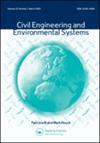基于代理的多目标管理模型控制沿海多层含水层系统的盐水入侵
IF 1.1
3区 工程技术
Q3 ENGINEERING, CIVIL
引用次数: 23
摘要
链接仿真优化(S-O)模型需要通过使用严格的数值模型或经过训练的近似物理过程的代理模型来模拟物理过程。本文提出了一种方法,利用训练和测试的多元自适应回归样条(MARS)代理模型与多目标盐水入侵管理模型相关联,来演化多层沿海含水层系统的帕累托最优管理策略。利用一个说明性多层沿海含水层系统对所开发方法的性能进行了评价。求解结果表明,MARS能够近似替代链接S-O模型中更为严格的数值模拟模型,保证链接S-O模型应用于沿海含水层管理问题的计算效率和可行性。此外,MARS在预测响应作为输出时识别最相关输入变量的能力,使其能够构建高效且稳健的代理模型。在优化模型中集成并行处理能力,提高了计算效率和求解此类大规模多目标问题的可行性。因此,利用基于MARS的代理模型开发的方法可能适用于制定最佳地下水开采策略,以实现沿海含水层的可持续区域管理。本文章由计算机程序翻译,如有差异,请以英文原文为准。
A surrogate based multi-objective management model to control saltwater intrusion in multi-layered coastal aquifer systems
ABSTRACT Linked simulation-optimisation (S–O) models need to simulate the physical processes either by using a rigorous numerical model, or a trained surrogate model approximating the physical processes. A methodology is proposed to evolve Pareto optimal management strategies for a multi-layered coastal aquifer system using a trained and tested Multivariate Adaptive Regression Spline (MARS) surrogate model linked to a multi-objective saltwater intrusion management model. Performance of the developed methodology is evaluated using an illustrative multi-layered coastal aquifer system. Solution results indicate that MARS is capable of approximately replacing the more rigorous numerical simulation model within the linked S–O model to ensure computational efficiency and feasibility in applying such linked S–O models for coastal aquifer management problems. Furthermore, the ability of MARS to recognise the most relevant input variables in predicting the responses as outputs enables the construction of an efficient and robust surrogate model. Integration of parallel processing capabilities within the optimisation model is shown to improve computational efficiency and feasibly of solving such large scale multi-objective problems. Therefore, the developed methodology utilising the MARS based surrogate model is potentially applicable for developing optimal groundwater extraction strategies for sustainable regional scale management of coastal aquifers.
求助全文
通过发布文献求助,成功后即可免费获取论文全文。
去求助
来源期刊

Civil Engineering and Environmental Systems
工程技术-工程:土木
CiteScore
3.30
自引率
16.70%
发文量
10
审稿时长
>12 weeks
期刊介绍:
Civil Engineering and Environmental Systems is devoted to the advancement of systems thinking and systems techniques throughout systems engineering, environmental engineering decision-making, and engineering management. We do this by publishing the practical applications and developments of "hard" and "soft" systems techniques and thinking.
Submissions that allow for better analysis of civil engineering and environmental systems might look at:
-Civil Engineering optimization
-Risk assessment in engineering
-Civil engineering decision analysis
-System identification in engineering
-Civil engineering numerical simulation
-Uncertainty modelling in engineering
-Qualitative modelling of complex engineering systems
 求助内容:
求助内容: 应助结果提醒方式:
应助结果提醒方式:


